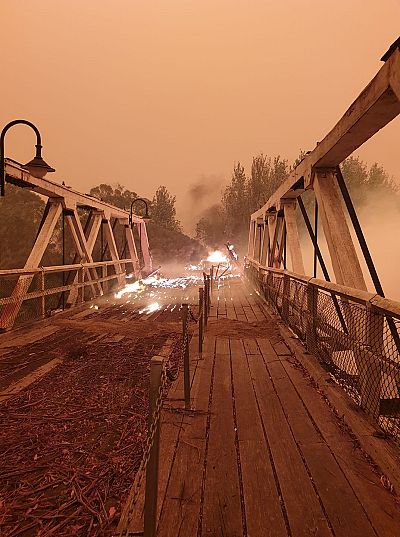At least eight people have died since Monday as the wildfires are expected to worsen across Australia.
A weeklong state of emergency has been called in the Australian state of New South Wales as deadly wildfires continue to ravage communities, forcing thousands from their homes.At least eight people have been killed by the fires in the eastern states of New South Wales and Victoria since Monday, including volunteer firefighters, officials have said. Another 18 people are still missing.The emergency period begins on Friday and marks the third time such a declaration was made since the fires began in November.Gladys Berejiklia, the state governor, told a press conference: "We don't take these decisions lightly but we also want to make sure we're taking every single precaution to be prepared for what could be a horrible day on Saturday."
Rescue teams are struggling to reach some rural areas, a New South Wales fire information spokesperson told NBC News.An emergency declaration was also made in the Australian Capital Territory, which includes Canberra, in response to thick smoke and dangerously poor air quality. The smog resulted in the cancellation of Canberra's New Year's Eve celebration and national parks and public libraries in the region have been closed to encourage people to stay indoors.Conditions are anticipated to worsen in the coming days. Australia's Bureau of Meteorology said temperatures are expected to soar above 104 degrees in western parts of the country Thursday, while similar temperatures are forecast in parts of New South Wales and Victoria into the weekend.
Already, more than 10 million acres have been razed by the fires and more than 1,000 homes have been destroyed.The fires are in part the result of a prolonged drought. The months of January through November were the second driest period on record since 1902, the Bureau of Meteorology said.Average rainfall has also been down most months nationwide since early 2017. New South Wales, in particular, has seen three years of rainfall falling short by about 5 inches of the historic average.The country also recorded its hottest day in mid-December at 107.4 degrees.Experts warn that these extreme weather conditions contributing to the fires are a mark of climate change.But the country's Prime Minister Scott Morrison has said there were "many other factors"responsible for the fires, and the link to climate change is not credible.Opposition leader Anthony Albanese has criticized Morrison saying he's not listening to fire officials or climate scientists.The public has also expressed outrage over the government's response, with the hashtags #NotMyPrimeMinister and #ScotMoResign trending.












